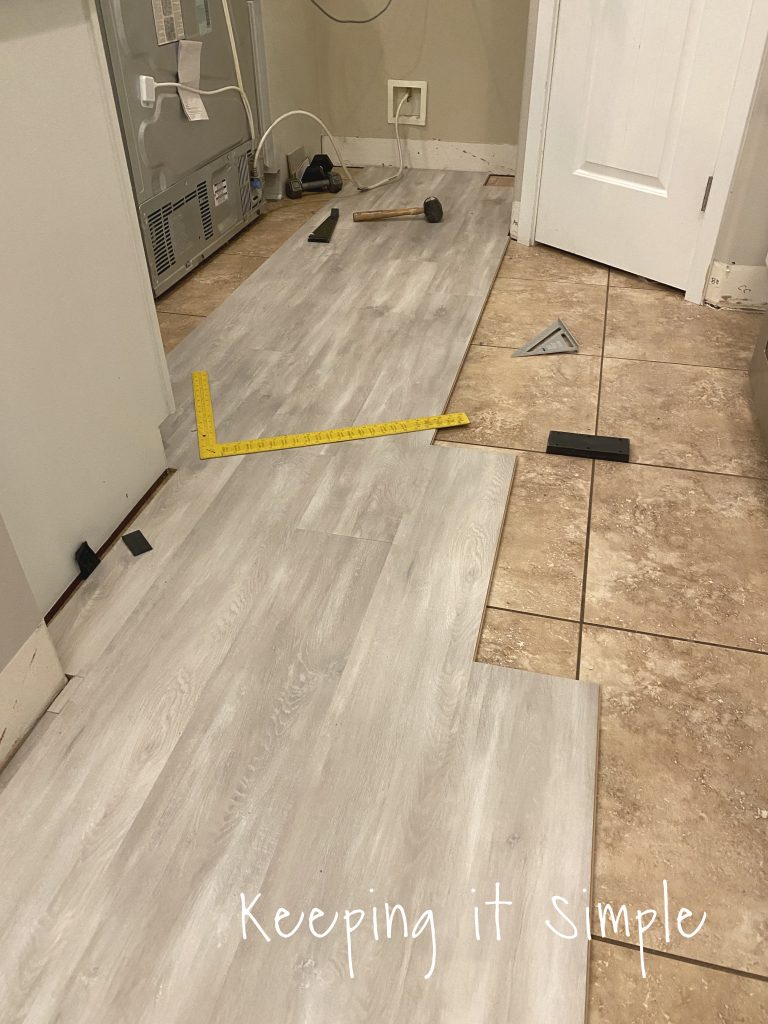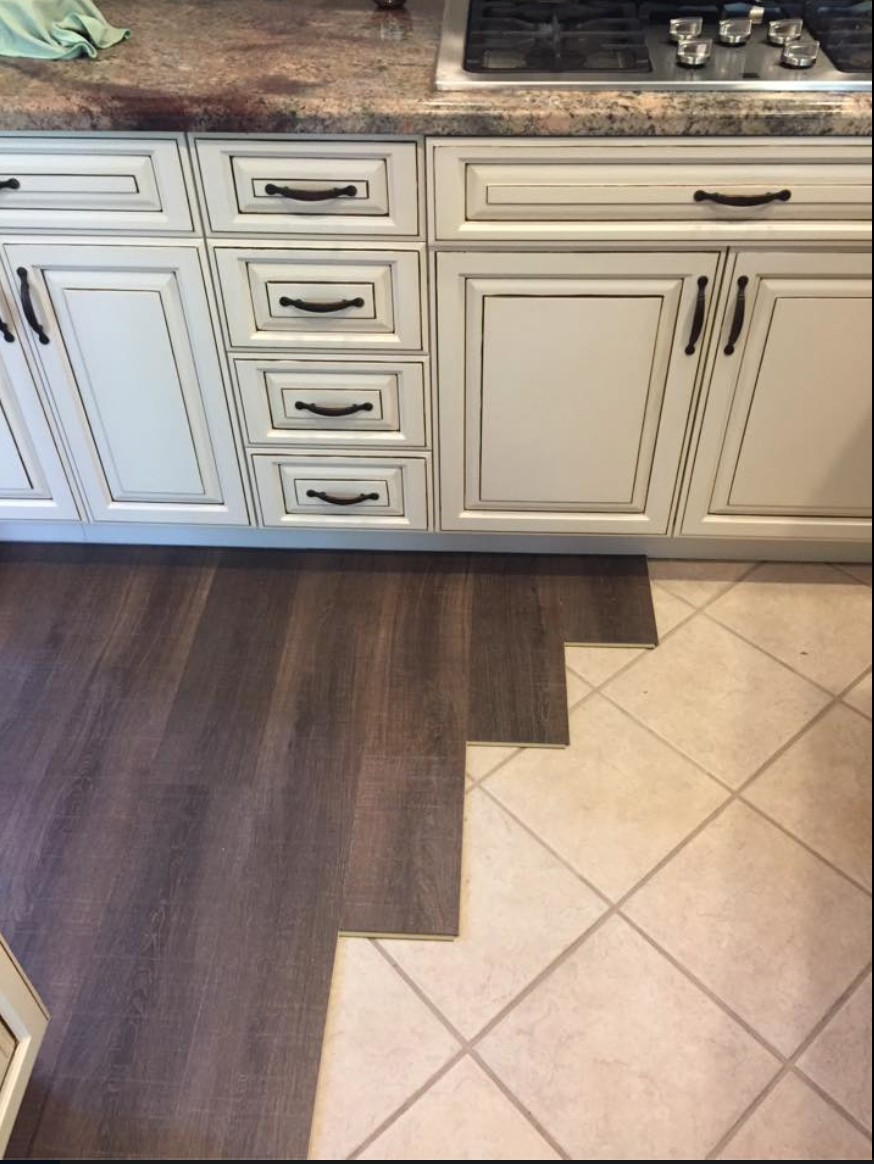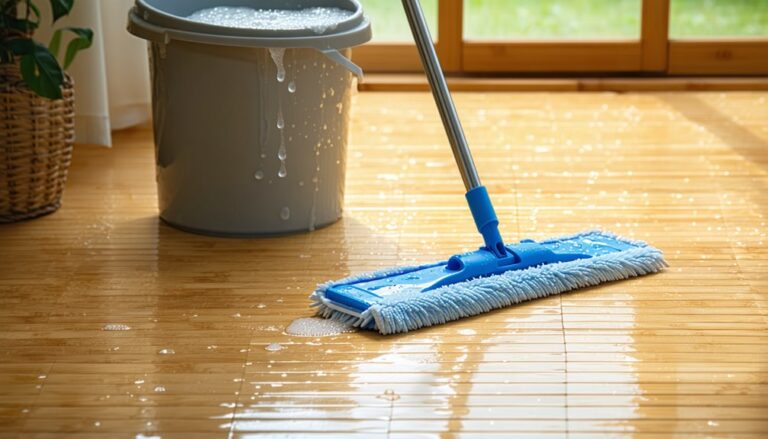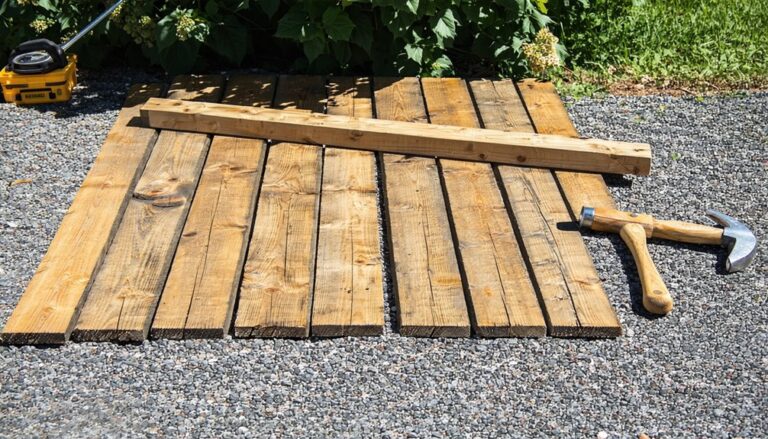Are you considering a fresh look for your home without the hassle of tearing up old tiles? Maybe you’re dreaming of the sleek, modern appearance that laminate flooring can bring, but you’re not sure if it can be laid directly over your existing tile.
You’re not alone. Many homeowners face this dilemma, and the good news is that there might be a solution that saves you both time and money. Imagine transforming your space with minimal disruption and maximizing your home’s aesthetic appeal. But, is it as simple as it sounds?
Dive into this article to uncover the possibilities, the dos and don’ts, and expert tips that can help you achieve your desired look while ensuring durability and style. Your home’s new chapter might just be a few steps away. Let’s explore if laying laminate flooring over tile is the right choice for you.
Benefits Of Laying Laminate Over Tile
Laminate flooring can be a good choice over tile. It is cost-effective and saves time. No need to remove the old tiles. This means less mess in your home. Laminate floors are also facile à installer. Many types snap together quickly. You can do it yourself with simple tools.
Laminate is also durable and lasts for years. It can handle spills and scratches. Many laminate options look like real wood. This gives your home a fresh, stylish look. You get a new sol without a big hassle.

Assessing Tile Condition
Look at the tiles closely. Cracks ou chips can cause problems. Tiles with damage are not strong. They might break under pressure. Check each tile. Feel for loose ones. Loose tiles need fixing. They can move and make the floor uneven.
Use a straight board to check the surface. Place it across the tiles. Look for gaps under the board. Gaps mean the floor is not level. A level floor is important. It helps the laminate fit well. Fix any uneven spots. This makes the floor strong and safe.
Necessary Tools And Materials
Selecting the right tools and materials ensures a successful laminate flooring installation over tile. Essential items include underlayment, spacers, and a tapping block. With these, achieving a smooth, durable finish becomes manageable and efficient.
Required Tools
UN tape measure is needed to check the room’s size. Use a carpenter’s square for perfect cuts. A utility knife helps in trimming edges. A rubber mallet is used to tap planks together. You will need a pull bar to fit planks snugly. Entretoises keep gaps even around the room. Lastly, a saw is essential for cutting planks.
Materials Needed
Revêtement de sol stratifié comes in many colors. Choose one that you like. Sous-couche provides a soft base for the laminate. Adhésif is required if planks need extra sticking. Barrière contre l'humidité is important for damp areas. Keep some extra planks for future repairs. All these materials ensure a smooth installation.

Preparing The Tile Surface
Preparing the tile surface is essential before laying laminate flooring. Clean the tiles thoroughly to remove dirt. Ensure tiles are dry and smooth for better laminate adhesion.
Cleaning The Tile
Start by removing all dust and dirt from the tile. A clean surface is key for laying laminate flooring. Use a vacuum to collect loose particles. Next, wipe the tiles with a damp cloth. Ensure the cloth is clean and free of debris. You can use a mild detergent for stubborn stains. Rinse the tiles with clean water after applying detergent. Let the tiles dry completely before proceeding. Dry tiles prevent moisture issues under laminate flooring.
Addressing Uneven Areas
Check for bumps or dips in the tile surface. Uneven tiles can cause problems later. Use a level to find uneven areas. Mark these spots for easier identification. Fill low spots with leveling compound. This creates a flat surface for the laminate. High spots may need grinding down. A smooth surface ensures proper laminate installation. Inspect your work thoroughly before moving on.
Choosing The Right Underlayment
Laminate flooring needs strong support. Sous-couche is that support. You can choose from different types. Foam is soft and easy to use. Felt is thicker and provides good soundproofing. Cork is eco-friendly and reduces noise well. Rubber works great for moisture resistance. Each type offers unique benefits. Think about your room needs before choosing. Foam suits low-traffic areas. Felt is perfect for busy places. Cork and rubber help in damp areas.
Underlayment offers many benefits. It keeps floors warm. It reduces noise in your home. It helps laminate last longer. Moisture stays away with underlayment. Floors feel softer and safer to walk on. No need to worry about bumps or uneven spots. Installing underlayment is easy. It makes DIY projects simple. Choose underlayment wisely for best results. Your floor will thank you!
Step-by-step Installation Process
Let the laminate sit in the room. This takes about 48 hours. It helps adjust to the room’s temperature. This step stops the floor from shifting later. Make sure the laminate boxes stay sealed. Keep them flat on the ground.
Sous-couche is important. It cushions the laminate. Also, it reduces noise when walked on. Roll out the underlayment across the tile. Cut it to fit the room size. Tape the edges to keep it in place.
Start laying the laminate from one corner. Use entretoises against the wall. This keeps a gap for expansion. Snap each piece into the next. Keep the pattern straight and even. Trim the last pieces to fit. Finish by removing the spacers. Now, the laminate floor is ready!
Common Challenges And Solutions
Expansion gaps are very important. They allow the floor to move. Without gaps, the floor might buckle. Measure the room size. Leave a gap of 10-12 mm around the room edges. Use spacers to keep the gap even. This helps the floor stay flat and smooth.
Doorways and transitions need special care. Use a transition strip. It helps join different floor levels. Measure the doorway width. Cut the strip to fit. Install the strip using glue or nails. This makes the floor look neat. It also stops people from tripping.

Maintenance Tips For Laminate Flooring
Laying laminate flooring over tile is possible. It offers a fresh look without removing old tiles. Ensure the tile surface is clean and level for best results. Use underlayment to reduce noise and add comfort. Proper care keeps your laminate flooring looking great for years.
Cleaning Techniques
Laminate flooring is easy to clean. Use a damp mop for gentle cleaning. Keep water away from the edges. Excess water can damage laminate. Dry the floor after mopping. Dust regularly with a soft broom. Use a vacuum for quick cleaning. Avoid using harsh chemicals. They can harm the floor.
Preventing Damage
Place mats at doorways. Mats prevent dirt from scratching the floor. Furniture pads protect the surface. Move furniture carefully. Heavy objects can dent the floor. Avoid wearing high heels on laminate. Heels can leave marks. Keep pets’ nails trimmed. Sharp nails can cause scratches. Use rugs in high-traffic areas.
When To Consult A Professional
Evaluating the condition of your tile floor is crucial before laying laminate. Uneven surfaces or damaged tiles might need expert advice. Professionals can assess and ensure proper installation, avoiding costly mistakes.
Complex Installations
Some floors are not easy to work with. Complex patterns or designs can be tricky. Surfaces inégales make laying laminate over tile harder. A professional can help in these cases. They know how to handle these challenges. They have the right tools and experience. Professionals can check for problems before starting. This ensures a smooth installation.
Signs Of Poor Installation
Look for gaps between tiles and laminate. This is a sign of poor work. Loose tiles or boards mean something is wrong. Flooring should not squeak when walked on. If it does, it might need fixing. Bumpy surfaces can be a sign of mistakes. These issues might need a professional touch. Fixing them early can save money later.
Questions fréquemment posées
Can You Install Laminate Over Tile Floors?
Yes, you can install laminate over tile. Ensure the tile is level, clean, and in good condition. Laminate flooring requires a smooth surface for proper installation. Use a moisture barrier if needed. This method saves time and avoids the hassle of tile removal.
Does Laminate Flooring Need Underlayment On Tiles?
Underlayment is recommended when installing laminate over tile. It provides cushioning and noise reduction. Additionally, it helps to create a smoother surface for the laminate. It also acts as a moisture barrier. Choose the right underlayment for your specific flooring needs.
Will Laminate Stick To Tile Adhesive?
Laminate does not adhere to tile adhesive directly. It is a floating floor system, which means it does not need to stick. Proper installation requires a smooth and clean surface. Ensure the tile adhesive does not interfere with the laminate’s movement.
Is It Cheaper To Lay Laminate Over Tile?
Laying laminate over tile can be cost-effective. It eliminates the need for tile removal, saving labor costs. However, consider the cost of underlayment and other materials. Evaluate the condition of the tile first. This can impact the overall expense.
Conclusion
Laying laminate over tile is a practical choice. It saves time and effort. No need to remove old tiles. Ensure the tiles are flat and clean. Use underlayment for better sound insulation. It also helps with moisture control. This method is cost-effective.
It gives your space a fresh, updated look. Always follow the manufacturer’s guidelines. Proper installation ensures durability. Many homeowners choose this option. It’s simple and efficient. Consider the pros and cons. Then decide what’s best for your home. Make sure to plan carefully.
Happy flooring!




